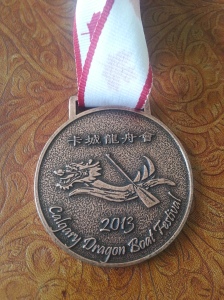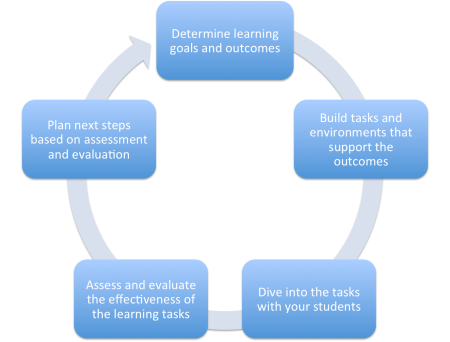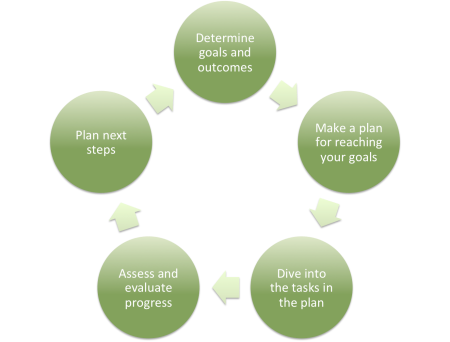Last week, a school in Calgary announced the elimination of certificates and ceremonies honoring academic and athletic achievement. The school board’s rationale addresses issues around internal vs. external motivation, competition vs. collaboration, and provides research that supports the school’s decision.
Right now, fierce debate is taking place around the use of badges and rewards to motivate people. Everyone has an opinion. Educators, parents, course designers, HR specialists, marketers, and app designers are all talking about how to leverage rewards to fuel motivation. I expect that when you encounter the use of rewards and badges in education, you have a distinct reaction either in favor or against the notion. And your reaction stems from your our own personal values and experiences.
Let’s dissect this topic and see where it goes. First, let’s see what others have to say. Some diverse and well-written arguments include:
- Punished by Rewards? A Conversation with Alfie Kohn by Ron Brandt. Kohn argues that both punishments and rewards are ways of manipulating students. He says that there is scientific evidence that rewards reduce the intrinsic curiosity and motivation that comes from being tasked with meaningful challenges. He also says that praise is an instrument of control, especially if it is used to gain compliance. He argues that educators should focus on meaningful content, engagement in a community, and choice, instead of rewards.
- I Don’t Get Digital Badges by Jackie Gerstein. Gerstein gives an overview of some of the main arguments against the use of badges and and highlights the the work of Alfie Kohn, Daniel Pink, Daniel Hickey, Bron Stuckey, Terry Heick, and others. Ultimately, Gerstein presents research-based evidence that badges do not equal motivation. She also argues that simply adding badges to a learning task does not result in the gamification of learning because badges do not provide formative assessment, and are not usually based on learner choice.
- Learning Badges by Degree of Freedom. In this blog post, the author examines his experience in a MOOC where he earns badges and poses some thoughtful questions about how the recognition of badges is being debated by licensing bodies, organizations, and employers.
- 7 Things You Should Know About Badges by Educause. This document is a great introduction to what badges are, how some educational institutions are using them, and what’s next in the development of badges as both formal and informal credentials in education. It takes a positive, informative approach to the concept of badges.
- Mozilla Open Badges. Mozilla has taken an open concept approach to badges as ways to learn, issue, and display them as credentials for a wide variety of purposes by anyone or any institution. The project aims to help people recognize others as well as receive recognition based on specific accomplishments or skills. Mozilla has also created an electronic way of collecting and displaying badges in a Badge Backpack.
- The Teacher’s Guide to Badges in Education by Edudemic. This article presents widely-held positive views on badges by drawing parallels between badges and gaming, pride in achievements, and goal-setting. It states that badges help to push students to try harder, think differently, and try activities that are outside of their comfort zones.
So there are supporters as well as opponents. The above posts also point out a diverse array of purposes that people see for badges such as:
- Checklists or a series of actions to be taken
- Choices of tasks to choose from
- Verification of credentials or skills
- Rewards for completing tasks
- Tracking of levels of accomplishment or skill
- Ways to pique interest and invite someone to take action
- Presentation of a challenge or task
It seems that the uses of rewards generally fall into four categories: motivation to complete, recognition of achievement, assessment, and/or tracking.
Next, I will examine some personal interactions with badges and rewards. (This post is turning out to be a very reflective experience!) Examples from my own life include:
- Dragon boat competition – This summer I joined an amateur dragon boat team and had a real blast. We unexpectedly won a bronze medal in our division at the Calgary Dragon Boat Festival. It was a thrill just to be there but I have to admit that winning a medal made my aching muscles much more worthwhile.
- Nike Training Club – This is one of my favorite apps. I’m not as motivated by the badges as I am by seeing the number of minutes I have accumulated through my workouts over time. There are different levels and focuses to choose from for each workout, and the instructional videos are fun and easy to follow.
- Inspiration from people at the top of their game – From watching elite athletes compete in the Olympics, to world renowned researchers speak on TED Talks, to following people and organizations on Twitter, they motivate and inspire me to learn more, connect with people, and take action. Many of the people that I look up to have won awards or received recognition that helps them to gain the spotlight, increase their reach, and distinguish themselves.
- Gaming – I don’t play many games, but there are a few that I enjoy. Developing skills and achieving the next level is a huge part of playing any game, online or otherwise. There is also an element of competition that fuels me.
- Grades and formal credentials – Anyone working toward a degree, certificate, course, or any other type of credential knows that the final reward is the recognition of having completed it.
- Black belt – Twelve years ago, I earned my black belt through my dojo, Okinawa Gojuryu Karatedo Kujekai. I put many years into this and consider this to be a source of immense pride. I also had a short but amazing experience at the Calgary Tai Chi & Martial Arts College where I practiced wushu. Both were incredibly valuable experiences.
- Career – Many people consider their job to be a source of pride. When you accomplish a project or achieve a new position, you have something new to put on your resume, kind of like a badge.
My personal experiences include both intrinsic drive as well as external motivators. There were times when I considered quitting karate. A complex web of elements blended together to help push me through. They include:
- Dedication to myself as a martial artist
- Motivation to earn the next belt
- Making friends with people in my karate club
- My love of practicing and performing specific moves and skills
- The curiosity that my friends had through their pop culture experiences with martial arts movies
- Expectations and support from my Master and my family
- How I was feeling at the time, or even that day
At any point in time, each of these motivational elements moved to the forefront or background on my journey to reach my goals in karate. They ebbed and flowed, and changed over time. I cannot isolate a single motivation. Likewise, on a day to day basis, I can say that working out with my Nike Training Club app could be classified as 80% internal and 20% external motivation. Usually. Tomorrow I might be ultra-motivated and classify it as 90/10. I don’t see anything wrong with this combination, or acknowledging that there are both internal and external forces that make up my own motivations. Could it be that badges and rewards do not constitute an all-or-nothing approach, and that viewing them as part of a cause and effect relationship is driving the current debate in inaccurate and polarizing directions?
For you, a badge may be motivating because it helps illuminate the path you are taking to achieve a goal. For me, a badge may mean formal recognition for achieving something. Even within the term, ‘external reward’ there are many personal interpretations and definitions. So what seems to motivate a student is likely a combination of different elements that we are interpreting as a single force of motivation.
My initial reaction to the debate around badges and rewards was to reject their usefulness and argue that internal motivation is the only constructive way to approach learning. However, my brief personal analysis leads me to conclude that internal motivations cannot be generalized, and that in reality, a complex mix of motivating factors helped me to reach my goals. Motivation is not a simple equation.
What’s your gut reaction? How do rewards play out in your daily life?




